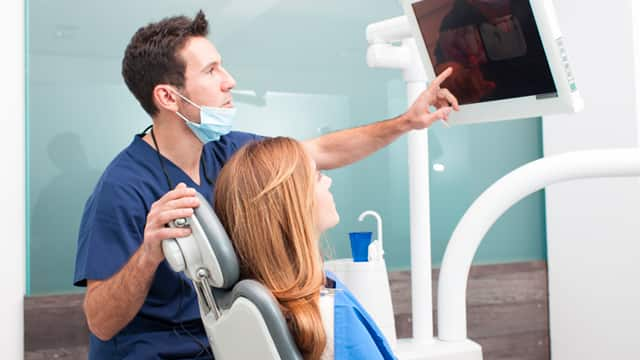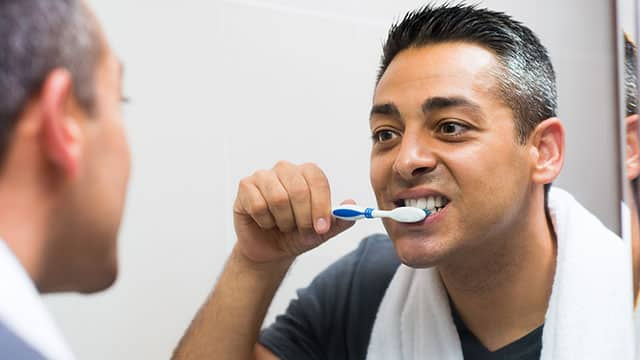The Anatomy of an Implant
Most dental implants have three parts:
- A titanium implant body inserted into the bone
- An attachment called an abutment
- A crown that is fixed to the abutment and aligned with your remaining teeth.
If even one becomes loose or broken, issues can develop with any of these three parts.
Implants are made of metal, but it is a biological process known as osseointegration that allows them to function. During osseointegration, your body produces living bone cells to grow around the implant surface and anchor it to your jawbone. Over time, healthy bone continues to surround the implant. If osseointegration doesn't happen the way it should, it can occasionally cause problems after implantation.
Recognizing a Failing Implant
When bone doesn't grow properly around an implant, the main sign is often mobility. At first, the movement might be slight and only recognizable by a dentist, but over time an implant that has failed to integrate will feel wobbly and could move when you chew or talk. An implant that has failed will be consistently movable.
Other signs of a dental implant that has lost osseointegration can include pain, swelling, or infection, but that's not always the case. If your dentist notices that your implant is mobile, they might recommend an X-ray to check your bone growth. An X-ray of a failed implant will likely show significant loss of bone around the metal portion of the dental implant.
Risk Factors for a Failed Dental Implant
The success of a dental implant procedure depends on many factors, but certain habits and medical conditions can increase your risk of a wobbling implant. Gum disease and bruxism can damage an implant that is healing. Diseases like osteoporosis that attack bone strength and density can make it difficult for the implant screw to anchor. Ongoing cancer treatment might also be a reason to pause an implant procedure, according to a study published in the Journal of Clinical and Experimental Dentistry, since radiation therapy for head and neck cancers may inhibit normal bone healing.
Some medications also can put you at risk for implant failure. According to researchers at the University at Buffalo, a compound in antidepressants that affects your rate of bone metabolism can cause osseointegration problems for people who take these medications.
Research published in the Journal of Dental Research also notes that smoking might increase your risk of dental implant failure, depending on where in your mouth the implant is placed. Your dentist may advise you to stop smoking completely or at least until bone integration is complete.
Treatment
The good news is that you can remove a failed dental implant while under local anesthesia. If the bone is intact around the location of the removed implant, no bone graft will be necessary.
If there is bone loss, your dentist could recommend a bone graft to improve the site before replacing the implant. Before placing your new implant, your bone graft will need to heal. During healing, your dentist will likely discuss ways to reduce the risk factors that caused the implant to fail, such as quitting smoking or waiting to complete any cancer treatment.
Avoiding Complications
Before your implant placement, have a discussion with your dentist about any risk factors that can limit the success of your implants. A change in your medical condition or medications can affect healing and osseointegration, so always inform your dentist or dental specialist of any changes to your health and medical history.
Good oral hygiene also is key to avoiding implant problems. Brushing twice daily and rinsing with an antibacterial mouthwash can help keep your gums healthy and bacteria at bay while your new tooth settles into place.
Oral Care Center articles are reviewed by an oral health medical professional. This information is for educational purposes only. This content is not intended to be a substitute for professional medical advice, diagnosis or treatment. Always seek the advice of your dentist, physician or other qualified healthcare provider.
ORAL HEALTH QUIZ
What's behind your smile?
Take our Oral Health assessment to get the most from your oral care routine
ORAL HEALTH QUIZ
What's behind your smile?
Take our Oral Health assessment to get the most from your oral care routine















